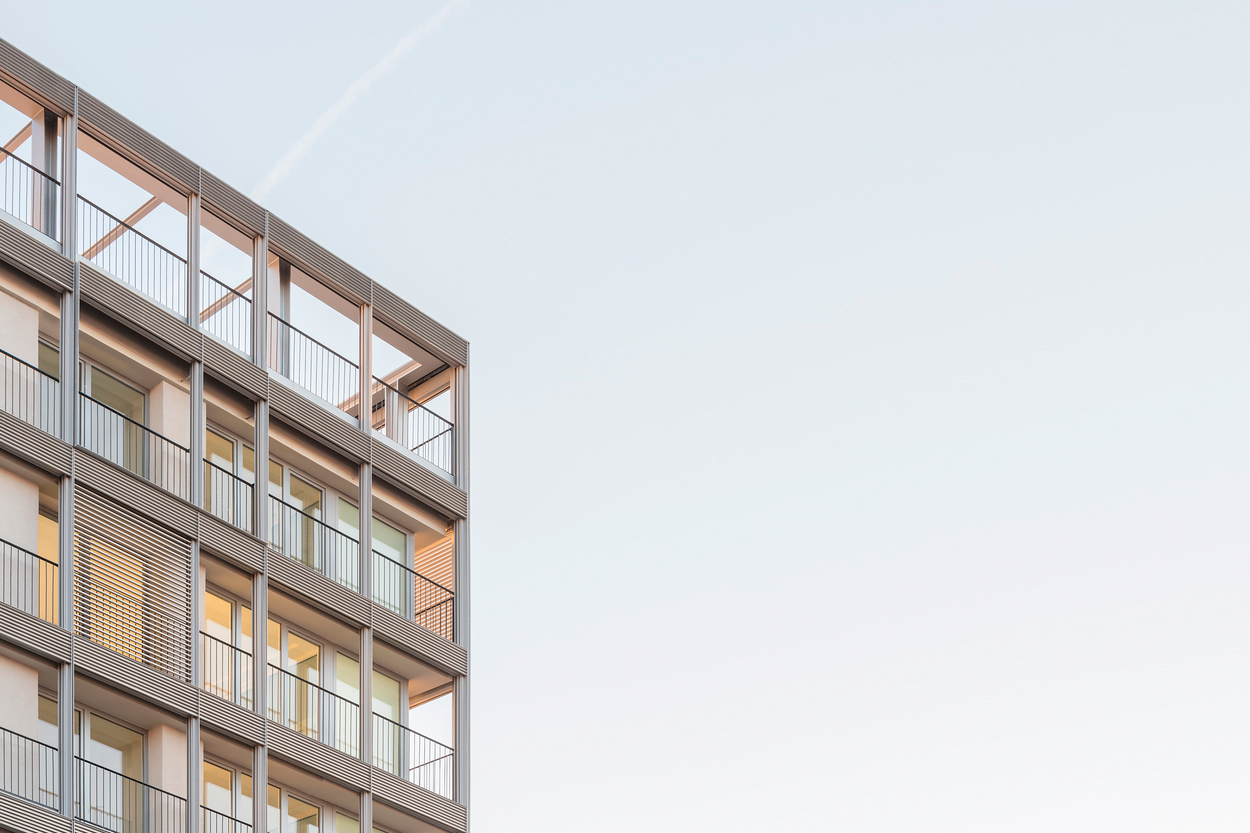Buildings are responsible for about 40% of global energy use and 36% of greenhouse gas emissions. But, how can the European Union address this problem? We explain the solutions adopted by the EU, as well as what you need to know about nearly zero-energy buildings or nZEB: their legal framework, characteristics, and some examples.
What is an nZEB building?
An nZEB (Nearly Zero Energy Building) has a very high level of energy efficiency, and the nearly zero or very low energy use it requires must be covered mainly by renewable sources, including energy produced on-site or in the building's surroundings.
In Spain, any building, both new and existing, can be classified as an nZEB building if it complies with the requirements set out in the Basic Document HE on Energy Saving of the Technical Building Code (CTE).
This legislative framework arises from the need to reduce the environmental impact generated by the construction and maintenance of buildings, as this sector consumes 40% of energy and produces 36% of greenhouse gas emissions in the European Union.
Context in Europe and Spain
In response to the need to reduce the effects of climate change, the European Union has set itself the objective of carbon neutrality by 2050, thus meeting the commitments of the international Paris Agreement.
In 2010, Directive 2010/31/EU on the energy efficiency of buildings was published. This Directive defines for the first time what nZEB buildings or nearly zero energy use buildings are. It also established that each member state must specify an exact definition that is adapted to its climatic characteristics and local environmental particularities of each country.
The directive establishes a guidance document with some requirements to be fulfilled by each member state, in order to draw up its own plan at national level:
- The nZEB legislation for public buildings was supposed to be published in January 2019.
- The nZEB legislation for all buildings was supposed to be published in January 2021.
- There must be a numerical indicator of primary energy expressed in kWh/m2/year.
- The renewable energy requirements must be clearly specified.
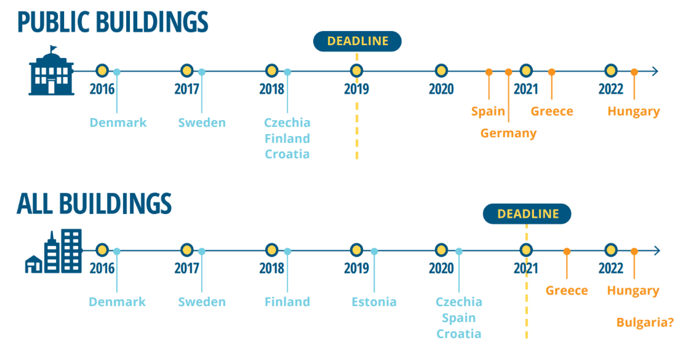
Compliance with requirements in nZEB building legislation. Source: BPIE
In the book "Nearly zero: a review of EU Member State implementation of new build requirements" by BPIE (Building Performance Institute Europe), the measures taken by each member state for nZEB buildings are analysed. A wide disparity was found in the definitions and metrics used by different EU Member States to determine the nZEB parameters.
In Spain, it is established that a nearly zero-energy building is a new or existing building that complies with the requirements established in the Basic Document "HE Energy Saving" of the CTE. In its section HE 0, a limit is set on the energy consumption of both non-renewable primary energy and total primary energy, taking into account the climate zone in which the building is to be located.
How to construct nearly zero energy use buildings?
The main objective when constructing an nZEB building is to reduce the energy demand of the buildings. In order to achieve this, different measures are being taken, some of which are included in the nZEB buildings guide produced by the ICAEN (Catalan Energy Institute):
- Passive measures are those that take advantage of the natural conditions of the environment to reduce the energy consumption of the building and achieve long-term savings in energy costs. These measures include the design of the orientation and shape of the building to maximise solar exposure and natural ventilation, bioclimatic criteria, etc.
- Active measures require the use of mechanical systems to reduce energy consumption and encourage the use of renewable energy sources. The use of high-efficiency HVAC systems, ventilation, and artificial lighting systems are some of the active measures applied in nZEB buildings.
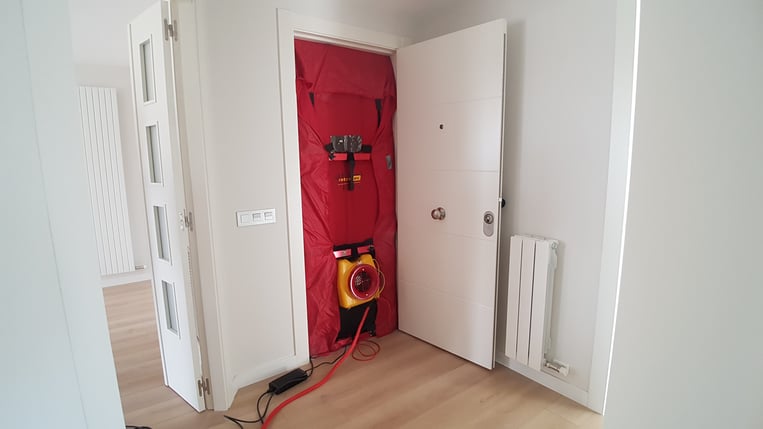
- Renewable energy generation measures include solar photovoltaics and solar thermal power generation, among others such as low-power wind or geothermal.
- Energy management measures focus on the monitoring and analysis of energy acquisition, transformation and consumption variables, which allows for the identification of improvement opportunities and optimisation of the building's energy efficiency.
Is it mandatory for buildings to be nZEB?
Article 9 of Directive 2010/31/EU requires new buildings to be nearly zero energy consumption from 2020. In Spain, the CTE updated in 2019 establishes the requirements to be met by new construction from that date onwards. Moreover, the new buildings occupied or owned by public authorities must comply with these requirements starting from 2018.
Examples of nZEB buildings
There are some examples of buildings that, in addition to complying with the nZEB standard, go one step further and set the way forward in terms of sustainable building. Two clear examples of this type of buildings we have worked on at Zero Consulting are the residential building La Sin by Solvia and the biopassive studio home by the Marès studio.
La Sin de Solvia
This residential building located in Torrejón de Ardoz, Madrid, was built with the aim of establishing the foundations that nZEB buildings should follow. Driven by Solvia, the project has been developing new construction proposals for nearly zero-energy buildings since 2015, anticipating regulatory requirements.
Systems such as heat recovery, precise insulation sizing and carpentry, and environmentally friendly materials were used to create nearly zero energy use homes.
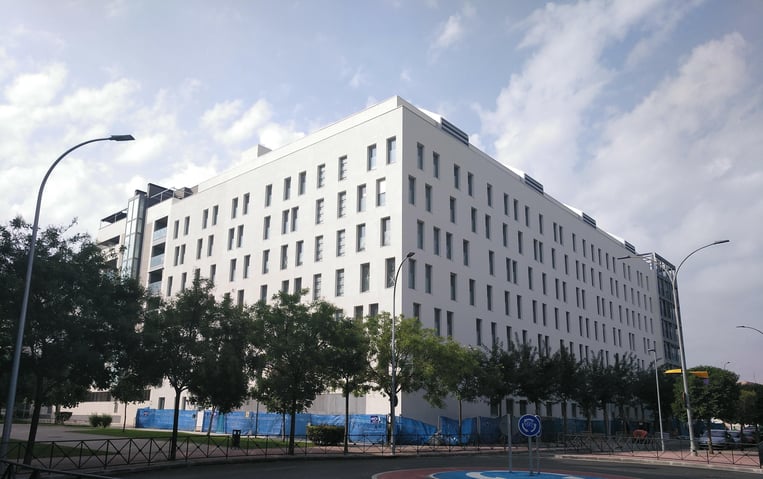
Marès studio-apartment
The Marès studio in Inca, Mallorca, is a passive house that houses the Marès studio. This house meets the optimal criteria for nearly zero energy use buildings, according to the Passivhaus certification system. This certification is based on the construction of buildings that minimize the need for heating and cooling. Additionally, the house features a series of additional characteristics that contribute to its energy efficiency, such as solar panels to produce electricity and a rainwater collection system for its reuse in garden irrigation.
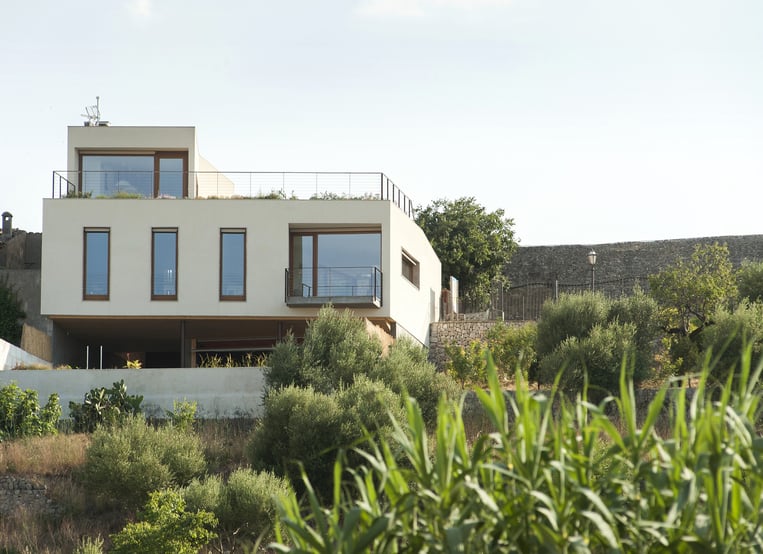
In conclusion, nZEB buildings provide numerous economic and environmental benefits to society. This allows EU member states to significantly reduce their CO2 emissions and improve their energy efficiency. They also promote the technological development of the involved agents, increasing their employability and business value. Therefore, the construction of nZEB buildings is a necessity for a more sustainable and environmentally friendly future.

